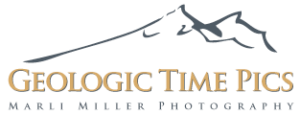Search for any geological feature below
–then click on the image to see a larger version in its correct format, a more detailed caption, and an ID number.

and please, drop me a line if you find this site useful!
*****
SOME POINTERS:
Photos typically include their locations, so you can use locations as keywords too. You get more hits with shorter words, and fewer hits as you become increasingly specific with increasing numbers of keywords. It’s best to use singular rather than plural (eg “volcano” instead of “volcanoes”).
As some words are included in others (“salt” within “basalt,” for example) you might want to be more specific to avoid getting a bunch of irrelevant photos.
Or you can just scroll down and see the most recently added photos… Enjoy!
Staurolite, showing cruciform twins

Staurolite, showing cruciform twinning (201210-73)
Download ImageMuscovite, biotite, chlorite (Pan)

Muscovite, biotite, chlorite –phylosilicate (sheet) silicate minerals, showing strong platy cleavage (201210-63)
Download ImageMagnetite

Magnetite, a highly magnetic iron oxide, shown stuck to a magnet (Fe304) (201210-48)
Download ImageHornblende amphibole crystals

crystals of hornblende, an amphibole. The sample on the right side illustrates the 60° and 120° cleavage angles (201210-43)
Download ImageHematite : Non-metallic and metallic

Non-metallic and metallic (specular) hematite, iron oxide (201210-42)
Download ImageKyanite crystals

Kyanite crystals, showing their typical bladed habit (201210-36) aluminosilicate
Download ImageKyanite crystals

Kyanite crystals, showing their typical bladed habit (201210-33) aluminosilicate
Download ImageGalena -Lead sulfide

Galena crystals, showing their typical blocky habit and cubic cleavage (201210-26)
Download ImagePyroxene -augite

Augite (pyroxene) crystals. The one on the right shows its 90° cleavage (201210-24)
Download Image












You must be logged in to post a comment.